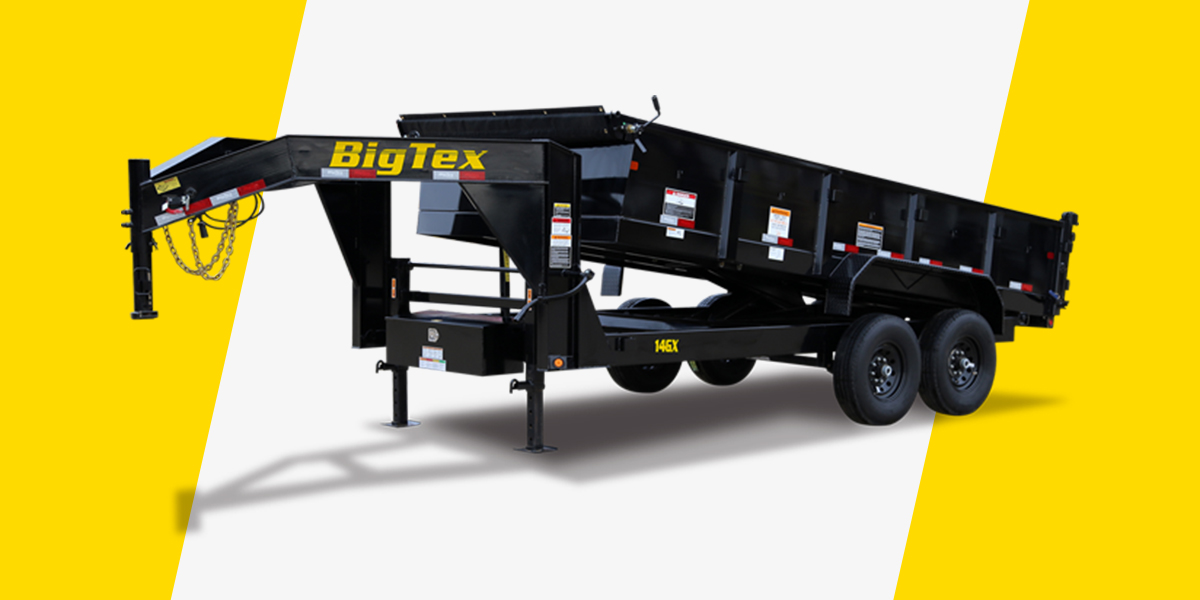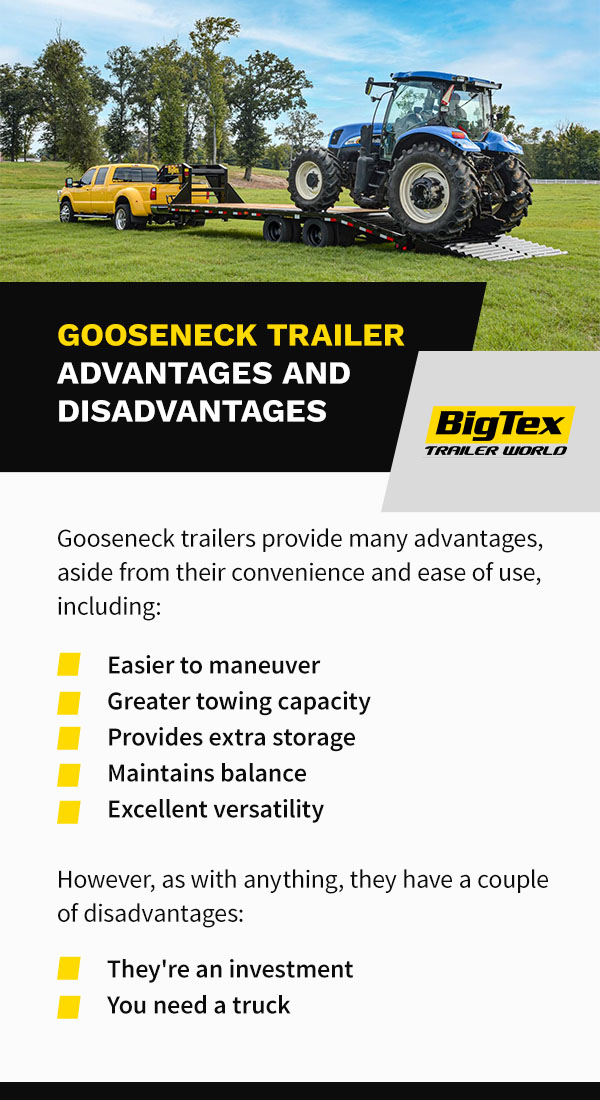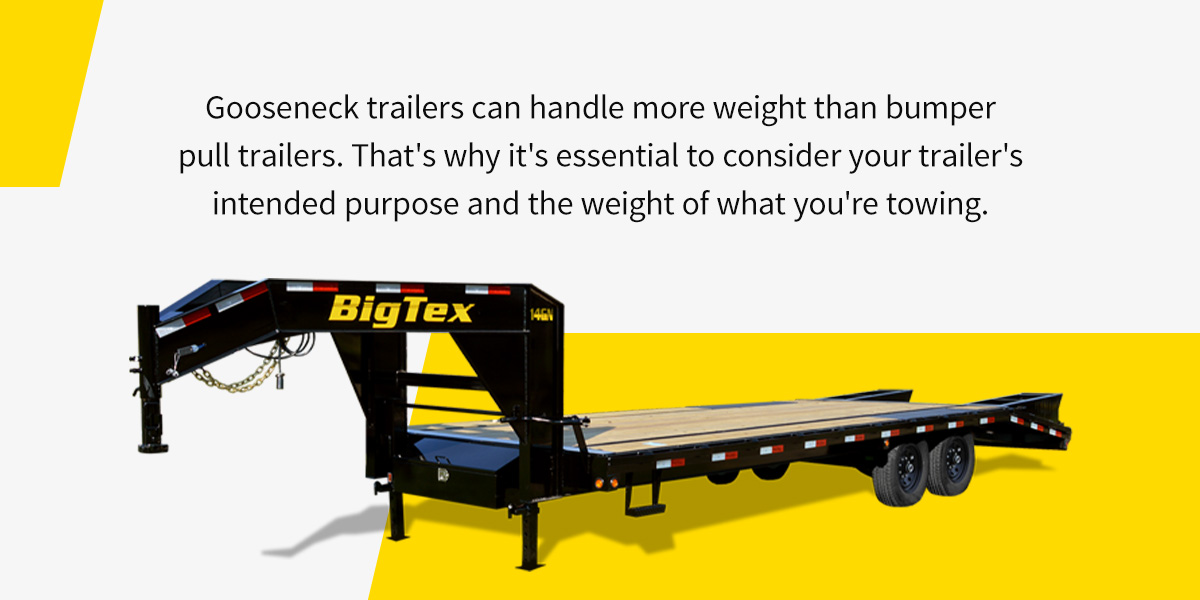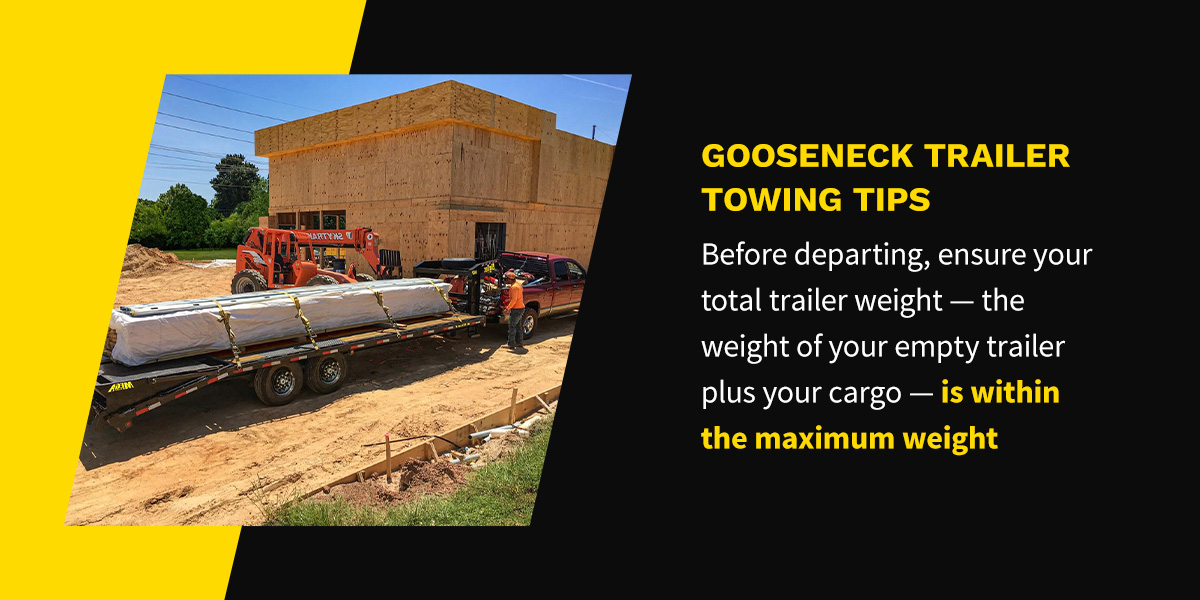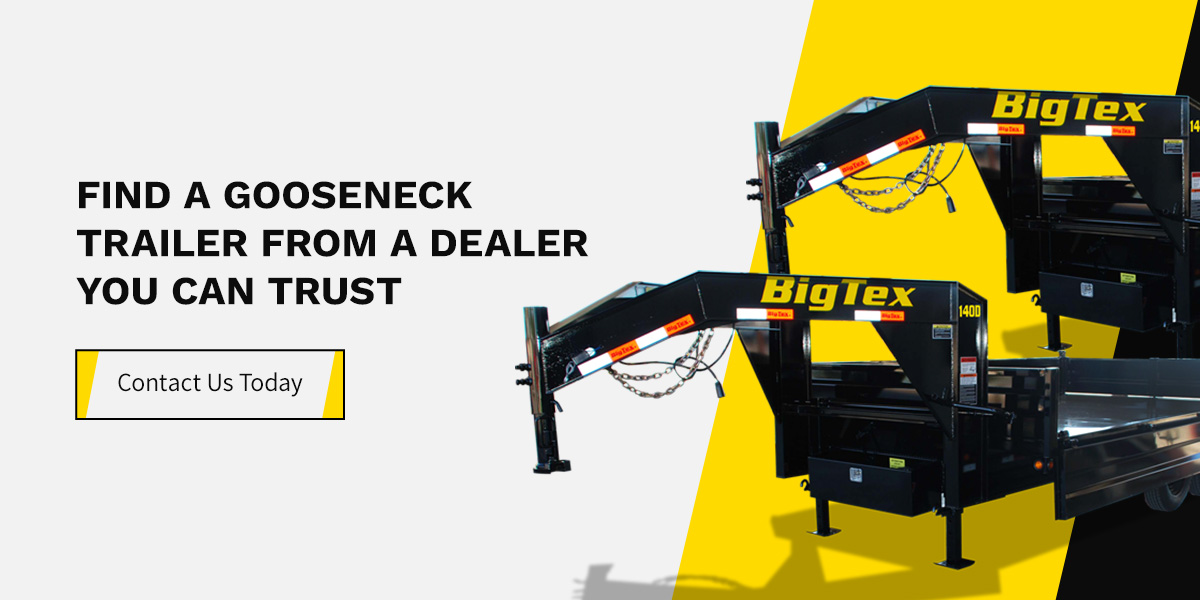People use trailers for transporting various things, like livestock, heavy equipment and recreational vehicles. By considering what you intend to use your trailer for, you can more easily determine which one is best for you. Two common types of trailers people choose from are gooseneck and bumper pull.
Gooseneck trailers are best for heavy loads, while bumper pull trailers work well for lighter loads. Learning more about gooseneck and bumper pull trailers, their pros and cons and the differences between them can help you determine if a gooseneck trailer is right for you.
What Is a Gooseneck Trailer?
The primary difference between gooseneck and bumper pull trailers is how they connect to your vehicle. Gooseneck trailers have long, arched necks and trailer tongues. Their necks go over a pickup truck’s closed tailgate and connect to a ball hitch in the truck’s bed.
Some pickup flatbeds come preinstalled with gooseneck hitches. If yours doesn’t, you can install one at any time. The hitch generally rests above the rear axle beneath the truck bed. Usually, you can flip the hitch ball up when you’re ready to use it.
Contractors and farmers love to use gooseneck trailers because they’re convenient to hook up to pickup trucks and have a high weight capacity. The increased weight capacity allows contractors to transport heavy equipment, like bulldozers and excavators, and farmers to transport heavy equipment like tractors and products like hay bales.
Gooseneck Trailer Advantages and Disadvantages
Gooseneck trailers are an excellent choice when you must haul a heavy load over a long or short distance. They provide many advantages, aside from their convenience and ease of use, including:
- Easier to maneuver: Gooseneck trailers are easy to maneuver because they have a wide turn radius and excellent stability. They tend to turn less sharply, so you have time to take corrective actions if necessary. Plus, because of their enhanced stability, they never sway, even in the wind. Their stability and maneuverability also make them easier and faster to park.
- Greater towing capacity: One of the biggest attractants of gooseneck trailers is that their bed is longer and broader than the average trailer bed, allowing for a greater towing capacity. Gooseneck trailers range from 20 to 40 feet long and can carry 14,000 to 25,000 pounds. With such a high towing capacity, you can tow more and heavier gear and equipment.
- Provides extra storage: Because the first portion of a gooseneck trailer extends over a pickup truck’s bed, you can use the space underneath it for extra storage. Some people place shelves in the space or set up a makeshift sleeping area.
- Maintains balance: A gooseneck trailer is best for transporting large and heavy cargo over long distances. Their stability and high weight capacity keep them balanced and prevent the trip from being bumpy.
- Excellent versatility: There are many types of gooseneck trailers — some are long, some are short and some are in between. Overall, these trailers tend to be wider, so you can haul wider loads or oddly shaped ones.
Their advantages are some of the many reasons to choose gooseneck trailers. However, as with anything, they have a couple of disadvantages:
- They’re an investment: When you purchase a gooseneck trailer, you’re investing in a piece of equipment for your business, farm or personal use. This requires an upfront purchase, but gooseneck trailers will save you time and money because they can pull more than another trailer can, preventing multiple trips and trailers. Even though gooseneck trailers are an investment, you can still find budget-friendly options if you look for them.
- You need a truck: Your gooseneck trailer will be useless without a vehicle that can tow it. Trucks are the only vehicles capable of towing gooseneck trailers because you must install the adapter in a truck bed. So, if you don’t own a truck, you’ll have to obtain one to use your gooseneck trailer.
Bumper Pull Trailer Advantages and Disadvantages
Bumper pull trailers, also known as tag-along or drag trailers, have a tongue that fits over a vehicle’s rear-end ball hitch. These trailers are best for hauling smaller loads over short distances. Because they’re small, you can connect a bumper pull trailer to an SUV, truck or cargo van. They offer a few benefits, including:
- Lower cost: Bumper pull trailers require fewer building materials due to their smaller size. Fewer materials equate to a lower price tag.
- Less fuel: Bumper pull trailers have smaller loads that tend to weigh less. Therefore, it takes less fuel to pull the trailer.
- Towing options: You can hook up a bumper pull trailer to a pickup or SUV, depending on their size and if they’re matched and rated for safe transport.
- Space-saving: This trailer only takes up a small amount of storage space.
- Less chance of sharp turns: The trailer follows directly behind the tow vehicle, so there’s less chance of cutting corners short.
The disadvantages of bumper pull trailers include the following:
- Less stability: Heavy loads result in instability for bumper pull trailers because they can’t balance them.
- Limited weight capacity: Bumper pull trailers can only haul small loads.
- Limited storage space: These trailers don’t have the available space for dressing rooms or extra storage.
- Harder to maneuver: Some people find backing up a bumper pull trailer to be more challenging. The ball hitch connection prevents the trailer from turning as expected.
- Requires care when hitching: If you don’t correctly connect the trailer, it’ll be problematic when you’re driving.
Gooseneck vs. Bumper Pull Trailers
Now that you know what gooseneck and bumper pull trailers are and their advantages and disadvantages, it’s time to see how they compare in the following points:
- Towing capacity: Gooseneck trailers can handle more weight than bumper pull trailers. That’s why it’s essential to consider your trailer’s intended purpose and the weight of what you’re towing.
- Cost: Bumper pull trailers are smaller than gooseneck trailers, so they typically cost less.
- Size and weight differences: Gooseneck trailers are wider, longer and heavier. However, although they’re longer, they don’t cause instability when carrying heavy loads.
- Towing vehicles: You must use a pickup truck to tow a gooseneck trailer, but you can use an SUV, pickup truck or similar vehicle to haul a bumper pull trailer.
- Stability: As mentioned before, one of the most significant differences between bumper pull and gooseneck trailers is where they connect to the towing vehicle. Because gooseneck trailers rest their weight above the rear axle instead of the bumper, they’re more stable and don’t sway or wobble.
- Maneuverability: A gooseneck trailer is more maneuverable than a bumper pull one because you mount it over the tailgate. It has a tighter turn radius, while bumper pulls have a normal turn radius.
- Cargo space: The bigger the trailer, the more room you have. Gooseneck trailers have more space for cargo and storage.
How to Hook Up a Gooseneck Trailer
Gooseneck trailers can be easier to connect than bumper pull trailers. Here are the three steps for connecting a gooseneck trailer to your truck:
- Use a jack to lift your trailer until the gooseneck’s tongue is above your truck’s bed. There must be enough clearance for you to back your truck in. Enlist the help of a spotter so they can keep an eye on your trailer while you raise it with your jack.
- Unlatch the coupler — the connection point on your gooseneck trailer. All couplers attach to the hitch ball via a latching mechanism. This latching mechanism locks them in place, while still allowing them to pivot around the ball during turns. The latch is on the coupler’s side. When it’s open, the plate moves freely.
- Back up your truck and align the trailer’s coupler over your truck’s ball hitch. Center it as much as possible and park your truck in a straight line in front of the trailer. Your spotter can help you line it up correctly.
- Lower your trailer onto the ball and latch the coupler in place.
- Use the pins — if your jackfeet have them — to secure the jackfeet in place. A suitable method for doing this is to rotate the pin while using your foot to lift each one into place.
- Connect your breakaway cable and safety chains. If your trailer disconnects from your truck, the breakaway cable applies the brakes before breaking away. Safety chains prevent the trailer from falling off the truck bed and ramming into the truck’s cabin if the coupler disconnects.
- Most trailers have an electrical receptacle you must connect.
- Walk around the truck and trailer and perform a safety inspection. Ensure everything is secure and in place. Double-check the safety chains and coupler latch mechanism. If you notice any issues, make sure to fix them before you leave.
Gooseneck Trailer Towing Tips
Gooseneck trailers are typically easier to line up and connect than bumper pull. Before departing, ensure your total trailer weight — the weight of your empty trailer plus your cargo — is within the maximum weight capacity. Also, check state towing regulations for your state and any you plan to travel through.
Here are some pre-departure tips to prepare you for towing your gooseneck trailer:
- Check that your trailer is level with your truck. A trailer that’s angled upwards is likely to scrape against uneven pavements or put too much weight on one of the axles, causing excessive tire wear and increasing the risk of a blowout.
- Ensure your trailer and gooseneck hitch system are compatible. Your trailer works with a specific size gooseneck hitch ball. If your ball is too small, the coupler won’t lock securely, which increases the risk of your trailer detaching itself. Similarly, the trailer won’t sit properly if your ball is too large.
- Connect your trailer light harness to the trailer plug and test the turn signals and the reverse, brake and tail lights.
- Secure heavy equipment and materials with straps or chains to prevent your cargo from shifting during transport.
- Balance your load so it’s even on the sides, front and back.
- Connect your trailer’s safety chains to the integrated attachment points.
- Check that the tire pressure of all the tires — truck and trailer — is within the manufacturer’s recommended range. If any are below, add air. In contrast, if any are above, let some of the air out.
- Lower the trailer all the way on the hitch ball to allow the coupler to securely lock into place.
- Check that the view in your side mirrors is wide enough to see the trailer’s tires without adjusting your position in the driver’s seat.
Once you’ve checked everything, you’re ready to hit the road. Here are some tips to make traveling with your trailer easier:
- Avoid hard stops and quick take-offs.
- Gradually accelerate and decelerate to minimize the chance of your cargo shifting and becoming damaged. As a bonus, it’s less taxing on your trailer and truck.
- If your vehicle has an electric brake controller, you can adjust it in the cab. Properly adjust the electric brake controller each time you haul something to enjoy a smoother ride.
- Keep a minimum four-second following distance from the vehicle in front of you. The heavier your load, the longer it’ll take for you to come to a complete stop.
- Maintain a speed at or below the legal speed limit. Some states require you to drive at a slower speed when hauling, so ensure you know the rules for the states you’re traveling in.
- Gooseneck trailers cut turns close, so take them wide.
- If you’re driving a manual truck, downshift when going down a decline. Downshifting on a decline helps you slow down and reduces the stress on the vehicle and trailer’s brake systems.
Find a Gooseneck Trailer From a Dealer You Can Trust
Choosing to purchase a gooseneck trailer for your farm or business is choosing to invest in your future. Gooseneck trailers can transport more equipment in fewer trips, saving you time and money. When you invest in a gooseneck trailer from Big Tex Trailer World, you can sleep easy knowing you’re getting the cream of the crop.
Big Tex Trailer World has over 20 years of experience selling, reinventing and servicing trailers. We have the largest selection of affordable new and pre-owned trailers, parts and accessories nationwide. When we sell you a trailer, we intend to meet your needs before, during and after the sale. Our expert staff can service any trailer — whether you purchase it from us or not.
Additionally, we’ll never pressure you to buy something you don’t want or need. Our staff works to understand your needs and offer you the best solutions to choose from. Contact us online today to learn more about our trailers, or call us at 660-358-1222 to speak with a personable and knowledgeable team member.
